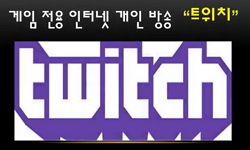이 논문은 동래기영계의 활동을 상징적인 예로 들어 개항기 이래 식민지기에 이루어진 한국인 민간단체 활동의 특성을 구명하려는 시도다. 개항기 이래 일제를 등에 업고 동래에 안착한 ...
http://chineseinput.net/에서 pinyin(병음)방식으로 중국어를 변환할 수 있습니다.
변환된 중국어를 복사하여 사용하시면 됩니다.
- 中文 을 입력하시려면 zhongwen을 입력하시고 space를누르시면됩니다.
- 北京 을 입력하시려면 beijing을 입력하시고 space를 누르시면 됩니다.
https://www.riss.kr/link?id=A107764067
- 저자
- 발행기관
- 학술지명
- 권호사항
-
발행연도
2021
-
작성언어
Korean
-
주제어
식민화 ; 동래기영회 ; 전용 ; 양가성 ; 혼종 ; colonization ; Dongnae-Giyounghoe ; appropriation ; ambivalence ; hybridity
-
등재정보
KCI등재
-
자료형태
학술저널
- 발행기관 URL
-
수록면
91-107(17쪽)
-
KCI 피인용횟수
0
- DOI식별코드
- 제공처
-
0
상세조회 -
0
다운로드
부가정보
국문 초록 (Abstract)
개항기 이래 일제를 등에 업고 동래에 안착한 일본인 민간단체는 식민제국의 침탈에 동조하여 식민정책 입안과 집행 과정에서 조력자, 혹은 대리자로서의 역할을 자임했다. 그러면서 일본인 민간단체는 일제 식민당국과 마찬가지로 식민지 지배에 나서는 한편으로 피식민지인과의 융화를 도모하는 이중적이고 모순적인 태도를 취했다. 그런 일본인 민간단체로부터 자극과 더불어 영향을 받은 동래의 한국인들도 민간단체를 새롭게 결성하거나 재건했는데 그 중에서도 1876년에 기존의 기영계를 중흥한 동래유지들 모임 동래기영회가 대표적이다.
동래기영회는 그런 식민지배자들의 이중적이고 모순적인 태도를 전용(專用)하는 전략으로 식민 지배를 수용하면서도 독립의 의지를 다지며 지방권력을 장악하고 근대문물을 수용하면서도 저항의식을 고취하는 근대교육 실시에 나섰다. 이러한 동래기영회 활동을 분석하고 해석하기 위해 여기서는 문화적 혼종에 관한 호미 바바의 ‘양가성 원리’를 원용하여 그 특성을 살펴보았다.
우선 동래기영회는 도시계획과 산업, 교육 등 광범위한 지역현안에 간여하고자 동래부국채보상일심회 발기에 참여한 것을 비롯하여 시구개정선 변경 반대, 시장 이전과 공설화, 온천탕 읍영화 등에 대한 적극적 의견을 개진했다. 특히 1920년대에는 일제에 협력한다는 비판을 무릅써가며 면협(面協), 읍회(邑會) 선거에 출마하여 지방권력을 장악하는 한편으로 독립의 의지를 다졌다. 나아가 근대교육을 수용하고 실시하여 교육계몽으로 국권회복을 도모하고자 1898년 동래부학교 설립을 시작으로 개양학교, 삼락학교, 동명학교를 거쳐 사립동래고등학교 등을 설립했다. 특히 근대교육 실시과정에서는 일본어 교육을 비롯하여 근대문물을 수용하고 이해하기 위한 교과목과 더불어 식민당국의 지침을 무시한 한국사와 한국지리를 가르쳐 학생들에게 저항의식을 고취시키기 위한 다양한 노력을 전개했다. 그 결과 동명학교를 비롯하여 동래사립고보 등에서 교육당국의 지침에 대항하여 동맹휴교를 주도하거나 1919년 3.1 만세운동에 적극적으로 참가했다.
이처럼 동래기영회가 지방권력 장악과 근대교육 실시로 추구한 바는 일제 식민당국이 식민지 지배를 위해 앞세운 ‘우월/미개’라는 선험적이고 추상적인 전제를 거부하는 한편 ‘내치동화(內治同和)’와 ‘일선동화(日鮮融和)’, ‘내선일체(內鮮一體)’라는 권위적이고 단선적인 요구를 물리치고 무력화시키는 저항적 혼종의 방식이었다고 본다.
이 논문은 동래기영계의 활동을 상징적인 예로 들어 개항기 이래 식민지기에 이루어진 한국인 민간단체 활동의 특성을 구명하려는 시도다.
개항기 이래 일제를 등에 업고 동래에 안착한 일본인 민간단체는 식민제국의 침탈에 동조하여 식민정책 입안과 집행 과정에서 조력자, 혹은 대리자로서의 역할을 자임했다. 그러면서 일본인 민간단체는 일제 식민당국과 마찬가지로 식민지 지배에 나서는 한편으로 피식민지인과의 융화를 도모하는 이중적이고 모순적인 태도를 취했다. 그런 일본인 민간단체로부터 자극과 더불어 영향을 받은 동래의 한국인들도 민간단체를 새롭게 결성하거나 재건했는데 그 중에서도 1876년에 기존의 기영계를 중흥한 동래유지들 모임 동래기영회가 대표적이다.
동래기영회는 그런 식민지배자들의 이중적이고 모순적인 태도를 전용(專用)하는 전략으로 식민 지배를 수용하면서도 독립의 의지를 다지며 지방권력을 장악하고 근대문물을 수용하면서도 저항의식을 고취하는 근대교육 실시에 나섰다. 이러한 동래기영회 활동을 분석하고 해석하기 위해 여기서는 문화적 혼종에 관한 호미 바바의 ‘양가성 원리’를 원용하여 그 특성을 살펴보았다.
우선 동래기영회는 도시계획과 산업, 교육 등 광범위한 지역현안에 간여하고자 동래부국채보상일심회 발기에 참여한 것을 비롯하여 시구개정선 변경 반대, 시장 이전과 공설화, 온천탕 읍영화 등에 대한 적극적 의견을 개진했다. 특히 1920년대에는 일제에 협력한다는 비판을 무릅써가며 면협(面協), 읍회(邑會) 선거에 출마하여 지방권력을 장악하는 한편으로 독립의 의지를 다졌다. 나아가 근대교육을 수용하고 실시하여 교육계몽으로 국권회복을 도모하고자 1898년 동래부학교 설립을 시작으로 개양학교, 삼락학교, 동명학교를 거쳐 사립동래고등학교 등을 설립했다. 특히 근대교육 실시과정에서는 일본어 교육을 비롯하여 근대문물을 수용하고 이해하기 위한 교과목과 더불어 식민당국의 지침을 무시한 한국사와 한국지리를 가르쳐 학생들에게 저항의식을 고취시키기 위한 다양한 노력을 전개했다. 그 결과 동명학교를 비롯하여 동래사립고보 등에서 교육당국의 지침에 대항하여 동맹휴교를 주도하거나 1919년 3.1 만세운동에 적극적으로 참가했다.
이처럼 동래기영회가 지방권력 장악과 근대교육 실시로 추구한 바는 일제 식민당국이 식민지 지배를 위해 앞세운 ‘우월/미개’라는 선험적이고 추상적인 전제를 거부하는 한편 ‘내치동화(內治同和)’와 ‘일선동화(日鮮融和)’, ‘내선일체(內鮮一體)’라는 권위적이고 단선적인 요구를 물리치고 무력화시키는 저항적 혼종의 방식이었다고 본다.
다국어 초록 (Multilingual Abstract)
With the effect and stimulation from Japanese civil organization, Korean residents in Dongnae tried to make and restore Korean civil organization. Dongnae-Giyounghoe restored in 1876 was a representative group in those organizations, which have been made in 1846. Dongnae-Giyounghoe appropriated paradoxical and ambivalent from Japanese dominator to accept its domination and pursue ‘regional development’ and ‘national education’ using its ‘reconciliation’ on the contrary. That is to say, they ran for provincial election in spite of blame to help Japanese Empire in 1920s, and grasped power of local assembly. At the same time, they started to support ‘international education’ which was representative and symbolic hybrid culture in Dongnae as ‘contact area’ and ‘border area’.
Dongnae-Giyounghoe accepted modern education trying to support Japanese language education by native speaker and to establish departmeno of Japanese language as an annex, and to encourage ‘national education’ to pursue “recovery of national power with educational enlightenment” using ambivalent and resistant strategy. Dongnae High School supported by Dongnae-Giyounghoe resisted against colonial dominator to practise education of Korean history and Korean geography ignoring guidance from the colonial Japanese authorities. And students of Dongnae High School participated ‘3.1 movement’, led school strike to protest against unpair judgement in athletic meet in 1940.
These methods was rebuilding subjectivity and identity with ambivalent and resistant hybrid not sinking in such premise as ‘priority/inferiority’ made by colonial dominator, pursuing modern education. With those methods, Dongnae-Giyounghoe tried to repel the demand of ‘Unity between Japan and Korea’ and to deny the authoritative discourse of Japanese Empire.
This treatise aims at investigating about the feature of modernized national education which was conducted in colonial times. In such a case, the feature of civil community’s activity have to be investigated not by abstract and transcendental concep...
This treatise aims at investigating about the feature of modernized national education which was conducted in colonial times. In such a case, the feature of civil community’s activity have to be investigated not by abstract and transcendental concept of ‘nationalism’ but by reason formed through colonial situation at that time. This treatise depend upon Homi Bhabha’s ‘ambivalance theory’ about hybrid of culture to discuss about the process and meaning with which Dongnae-Giyounghoe pursued national consciousness in colonial situation. After the Early Modern Period the Japanese civil organization which supported by Japanese Empire worked its role to help invasion, establishing and practising of policies of colonial empire. However, the Japanese civil organization took paradoxical and ambivalent attitude to help ‘domination’ of colonial government on one side, and try ‘reconciliation’ on another side.
With the effect and stimulation from Japanese civil organization, Korean residents in Dongnae tried to make and restore Korean civil organization. Dongnae-Giyounghoe restored in 1876 was a representative group in those organizations, which have been made in 1846. Dongnae-Giyounghoe appropriated paradoxical and ambivalent from Japanese dominator to accept its domination and pursue ‘regional development’ and ‘national education’ using its ‘reconciliation’ on the contrary. That is to say, they ran for provincial election in spite of blame to help Japanese Empire in 1920s, and grasped power of local assembly. At the same time, they started to support ‘international education’ which was representative and symbolic hybrid culture in Dongnae as ‘contact area’ and ‘border area’.
Dongnae-Giyounghoe accepted modern education trying to support Japanese language education by native speaker and to establish departmeno of Japanese language as an annex, and to encourage ‘national education’ to pursue “recovery of national power with educational enlightenment” using ambivalent and resistant strategy. Dongnae High School supported by Dongnae-Giyounghoe resisted against colonial dominator to practise education of Korean history and Korean geography ignoring guidance from the colonial Japanese authorities. And students of Dongnae High School participated ‘3.1 movement’, led school strike to protest against unpair judgement in athletic meet in 1940.
These methods was rebuilding subjectivity and identity with ambivalent and resistant hybrid not sinking in such premise as ‘priority/inferiority’ made by colonial dominator, pursuing modern education. With those methods, Dongnae-Giyounghoe tried to repel the demand of ‘Unity between Japan and Korea’ and to deny the authoritative discourse of Japanese Empire.
목차 (Table of Contents)
- 국문초록
- Ⅰ. ‘경계지대’에서의 식민지배에 대한 재론
- Ⅱ. 일본인 민간단체와 동래기영회의 활동
- Ⅲ. 동래기영회 활동의 전략적 혼종성
- Ⅳ. 근대 민간단체의 활동에 대한 관점
- 국문초록
- Ⅰ. ‘경계지대’에서의 식민지배에 대한 재론
- Ⅱ. 일본인 민간단체와 동래기영회의 활동
- Ⅲ. 동래기영회 활동의 전략적 혼종성
- Ⅳ. 근대 민간단체의 활동에 대한 관점
- 참고문헌
참고문헌 (Reference)
1 정윤길, "현대사상 15" 대구대학교 현대사상연구소 2015
2 김승, "한말․일제하 동래지역 민족운동과 사회운동" 부경역사연구소 6 : 2000
3 기든스, "포스트모더니티" 민영사 1991
4 박상기, "탈식민주의 이론과 쟁점" 문학과 지성사 2003
5 김동철, "조선후기 왜관 개시무역과 동래상인" 한국고전번역원 21 : 1998
6 "조선일보"
7 김태억, "일제 식민지지배의 구조와 성격" 경인문화사 2005
8 유모토 고이치, "일본 근대의 풍경사" 그린비 2004
9 유선영, "식민지의 일상, 지배와 균열" 문화과학사 2006
10 박철규, "부산지역 일본인 사회단체의 조직과 활동 - 1910년대를 중심으로 -" 부산경남사학회 (56) : 163-206, 2005
1 정윤길, "현대사상 15" 대구대학교 현대사상연구소 2015
2 김승, "한말․일제하 동래지역 민족운동과 사회운동" 부경역사연구소 6 : 2000
3 기든스, "포스트모더니티" 민영사 1991
4 박상기, "탈식민주의 이론과 쟁점" 문학과 지성사 2003
5 김동철, "조선후기 왜관 개시무역과 동래상인" 한국고전번역원 21 : 1998
6 "조선일보"
7 김태억, "일제 식민지지배의 구조와 성격" 경인문화사 2005
8 유모토 고이치, "일본 근대의 풍경사" 그린비 2004
9 유선영, "식민지의 일상, 지배와 균열" 문화과학사 2006
10 박철규, "부산지역 일본인 사회단체의 조직과 활동 - 1910년대를 중심으로 -" 부산경남사학회 (56) : 163-206, 2005
11 "부산일보"
12 부산광역시, "부산시사"
13 최해군, "부산 7000년, 그 영욕의 발자취(2)" 地平 1997
14 호미 바바, "문화의 위치" 소명출판 2002
15 피터 버크, "문화 혼종성" 이음 2012
16 변광석, "동래기영회의 활동과 변화를 통해본 지역성" 부산경남사학회 (84) : 73-102, 2012
17 동래고등학교, "동래고등학교 80년사"
18 홍순권, "근대도시와 지방권력–한말 일제하 부산의 도시 발전과 지방세력의 형성" 선인 2010
19 김승, "근대 부산의 일본인사회와 문화변용" 선인 2014
20 차철욱, "개항기 부산항의 조선인과 일본인의 관계 형성" 한국학연구소 (26) : 7-43, 2012
21 釜山商業會議所, "釜山要覽"
22 公立尋常小學校, "釜山第1公立尋常小學校要覽"
23 동래기영회, "財團法人 東萊耆英會 170年史"
24 太田好信, "民族誌的近代への介入-文化を語る權利は誰にあるのか" 人文書院 2002
25 朴海玉, "東アジアの 都市形態と 文明史" 國際日本文化硏究センター 2004
26 釜山甲寅會, "日鮮通交史附釜山史近代記"
27 프란츠 파농, "大地의 저주받은 者들" 광민사 1979
28 손숙경, "19세기 중반 동래 지역 기영회 결성과 그 역사적 의미" 부산경남사학회 (83) : 71-103, 2012
동일학술지(권/호) 다른 논문
-
놀이의 공간 변화와 소비 - 베이징 어린이 놀이를 중심으로 -
- 비교민속학회
- 한남수(Han, Nam-Su)
- 2021
- KCI등재
-
- 비교민속학회
- 노성환(No, Sung hwan)
- 2021
- KCI등재
-
현행 정부기(政府旗)의 태극(太極) 디자인에 대한 비판적 고찰
- 비교민속학회
- 우실하(Woo, Silha)
- 2021
- KCI등재
-
북한 조선민속박물관의 전시 구성과 체계 - 상설전시의 특성과 남북한 비교를 중심으로 -
- 비교민속학회
- 권혁희(Kwon, Hyukhui)
- 2021
- KCI등재
분석정보
인용정보 인용지수 설명보기
학술지 이력
| 연월일 | 이력구분 | 이력상세 | 등재구분 |
|---|---|---|---|
| 2027 | 평가예정 | 재인증평가 신청대상 (재인증) | |
| 2021-01-01 | 평가 | 등재학술지 유지 (재인증) |  |
| 2018-01-01 | 평가 | 등재학술지 유지 (등재유지) |  |
| 2015-01-01 | 평가 | 등재학술지 유지 (등재유지) |  |
| 2011-01-01 | 평가 | 등재학술지 유지 (등재유지) |  |
| 2009-01-01 | 평가 | 등재학술지 유지 (등재유지) |  |
| 2007-01-01 | 평가 | 등재학술지 유지 (등재유지) |  |
| 2004-01-01 | 평가 | 등재학술지 선정 (등재후보2차) |  |
| 2003-01-01 | 평가 | 등재후보 1차 PASS (등재후보1차) |  |
| 2001-07-01 | 평가 | 등재후보학술지 선정 (신규평가) |  |
학술지 인용정보
| 기준연도 | WOS-KCI 통합IF(2년) | KCIF(2년) | KCIF(3년) |
|---|---|---|---|
| 2016 | 0.39 | 0.39 | 0.42 |
| KCIF(4년) | KCIF(5년) | 중심성지수(3년) | 즉시성지수 |
| 0.46 | 0.44 | 0.796 | 0 |




 DBpia
DBpia





